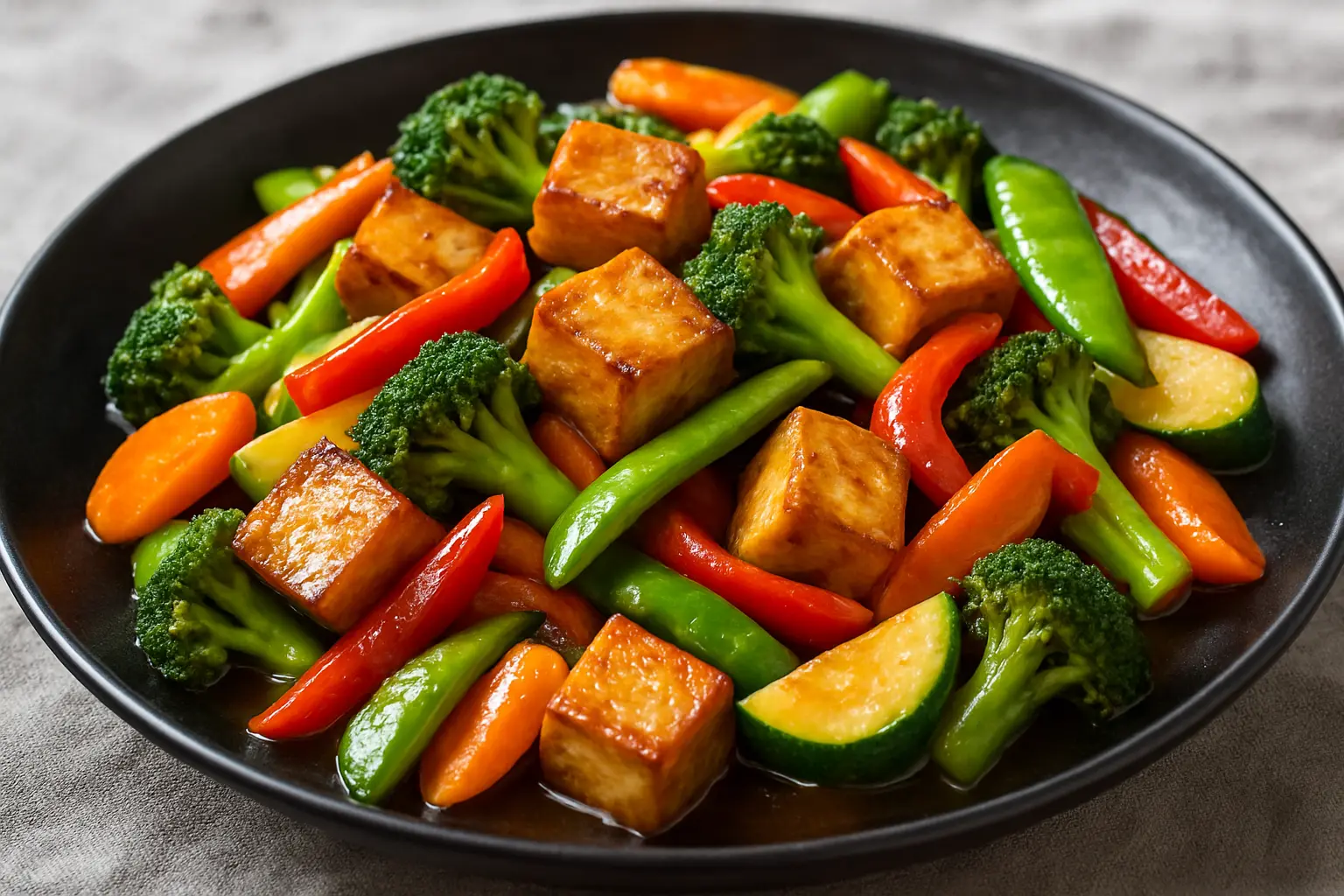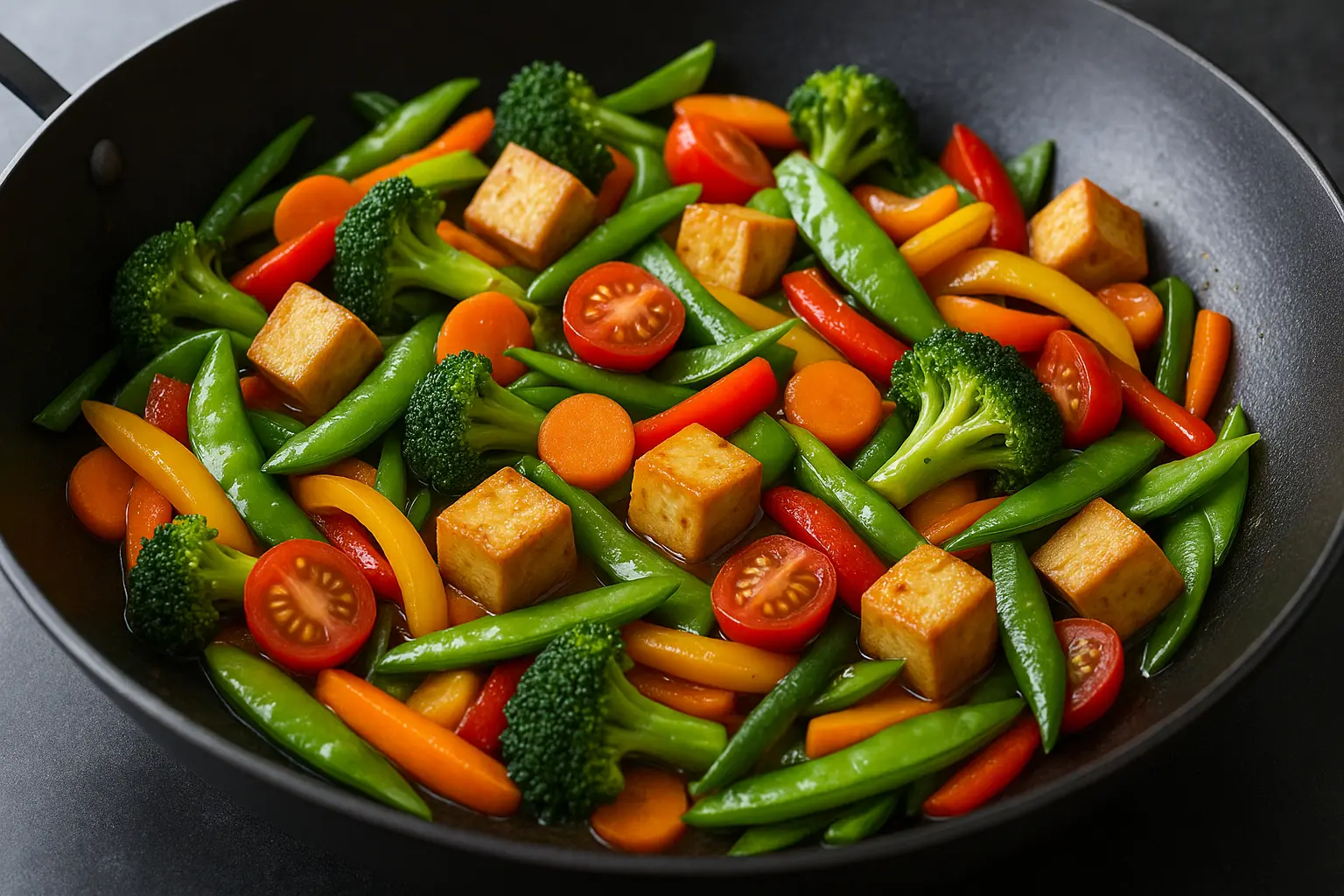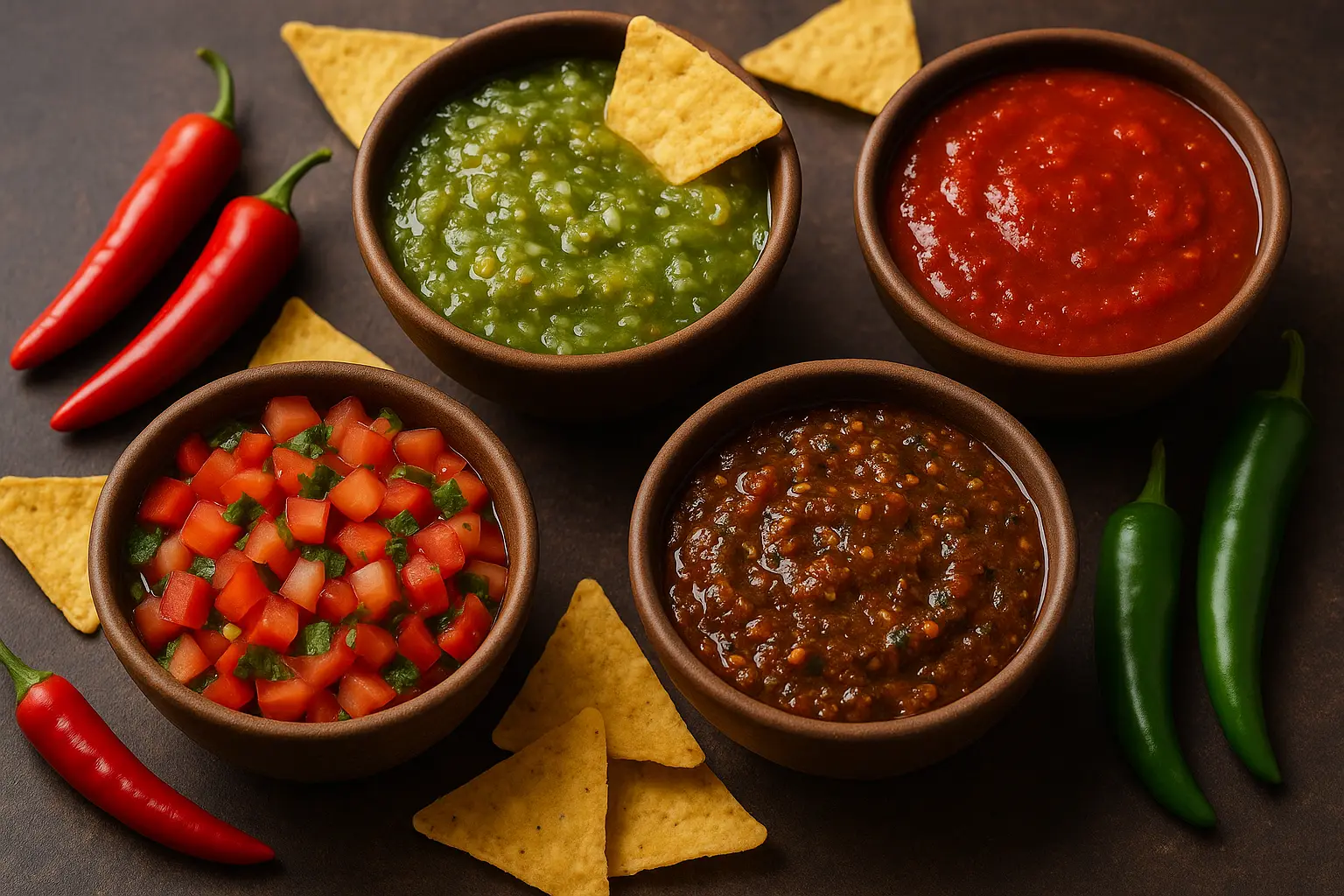When life gets busy, cooking dinner often becomes an afterthought. But instead of reaching for takeaway menus or frozen meals, stir-fry offers a perfect balance: fast cooking, minimal prep, endless flavor, and a nutritious punch. Even better, when you use seasonal vegetables, you not only support local produce but also enjoy fresher flavors at their nutritional peak.
Stir-fry meals are flexible, affordable, and ideal for busy weeknights. By mixing seasonal vegetables with tofu, tempeh, noodles, or rice, you can create a complete and balanced dinner in under 30 minutes. Whether you’re vegan, vegetarian, or just looking to add more plant-based meals to your diet, seasonal stir-fry recipes will keep your dinners exciting and delicious all year round.

Why Seasonal Vegetables Make Stir-Fry Better
Peak Flavor & Freshness
Seasonal vegetables are harvested at their prime, making them more flavorful and vibrant in stir-fries. For example, crisp snow peas in spring or hearty pumpkin in winter bring a depth of flavor that off-season produce just can’t match.Nutritional Boost
Freshly picked seasonal produce retains more vitamins, minerals, and antioxidants. Eating with the seasons ensures your body gets a natural variety of nutrients year-round.Budget-Friendly Cooking
Seasonal vegetables are typically cheaper because they’re more abundant. This helps cut costs while still enjoying gourmet-tasting dinners.Sustainable Choice
Eating seasonally reduces the carbon footprint from long-distance food transportation. Supporting local farmers also strengthens communities.
Stir-Fry Basics: Techniques for Success
Before diving into recipes, mastering stir-fry technique is essential.
High Heat is Key: Use a wok or a large skillet, preheated properly. Stir-frying is about quick cooking that locks in texture and flavor.
Prep Before Cooking: Since cooking happens fast, chop all vegetables, proteins, and aromatics before turning on the heat.
Oil Choice: Opt for oils with high smoke points—like peanut oil, sesame oil, or sunflower oil.
Flavor Base: Garlic, ginger, chili, and scallions form the backbone of most stir-fry flavors.
Balancing Sauces: A great stir-fry sauce usually combines salty (soy sauce), sweet (maple or honey), sour (rice vinegar or lime), and umami (miso or mushroom sauce).
Timing Matters: Cook harder vegetables (carrots, broccoli stems) first, then add softer ones (zucchini, spinach) later.
Seasonal Stir-Fry Recipes
🌱 Spring Stir-Fry Ideas
Spring brings fresh greens, tender veggies, and light flavors.
Asparagus & Snow Pea Stir-Fry
Base: Garlic, ginger, sesame oil
Veggies: Asparagus, snow peas, spring onions, carrots
Protein: Tofu or tempeh
Sauce: Soy sauce, lime juice, sesame seeds
Serve with: Brown rice or soba noodles
Mushroom & Baby Spinach Stir-Fry
Uses earthy mushrooms with tender spring spinach
Flavor with miso paste and light soy sauce
Lemon-Ginger Vegetable Stir-Fry
Adds brightness with fresh lemon zest
Perfect for a light, refreshing weeknight dinner
☀️ Summer Stir-Fry Ideas
Summer vegetables are vibrant, juicy, and fast-cooking—ideal for stir-fry.
Zucchini & Bell Pepper Stir-Fry
Base: Garlic, ginger, fresh chili
Veggies: Zucchini, capsicum, cherry tomatoes, corn
Protein: Chickpeas or tofu
Sauce: Tamari, rice vinegar, splash of maple syrup
Eggplant & Basil Thai-Style Stir-Fry
Uses fresh eggplants and Thai basil
Spicy, fragrant, and pairs beautifully with jasmine rice
Mango & Veggie Stir-Fry
Add ripe mango for sweetness
Combine with broccoli and snow peas for a sweet-savory kick
🍂 Autumn Stir-Fry Ideas
Autumn is about warming flavors and hearty textures.
Pumpkin & Kale Stir-Fry
Veggies: Pumpkin cubes, kale, carrots
Sauce: Ginger, soy, garlic, chili flakes
Protein: Tempeh or seitan
Comforting and slightly spicy—perfect for cooler nights
Brussels Sprouts & Mushroom Stir-Fry
Crispy Brussels sprouts with earthy mushrooms
Add a splash of balsamic for depth
Sweet Potato & Broccoli Stir-Fry
Slightly sweet, very filling
Pair with rice noodles for a complete dinner
❄️ Winter Stir-Fry Ideas
Winter calls for heartier veggies and warming sauces.
Cauliflower & Carrot Stir-Fry
Tossed in a garlicky soy glaze
Comforting and filling without being heavy
Cabbage & Tofu Stir-Fry
Savory-sweet stir-fry with ginger and hoisin sauce
Affordable and winter-perfect
Broccoli & Pumpkin Seed Stir-Fry
Adds crunch and protein with roasted seeds
Great over brown rice
Vegan Protein Boosters for Stir-Fry
Tofu: Absorbs sauces beautifully
Tempeh: Nutty flavor, rich in protein
Seitan: Great meaty texture
Chickpeas/Edamame: Adds variety and fiber
Cashews/Almonds: Crunch and healthy fats
Meal Prep Tips for Stir-Fry
Pre-Chop Veggies: Store in airtight containers for 3–4 days.
Make Stir-Fry Sauces Ahead: Mix soy sauce, vinegar, garlic, ginger, and chili in jars for quick use.
Batch Cook Grains: Prepare rice or noodles in bulk to save time on weeknights.
Use Leftovers Creatively: Leftover stir-fry works great in wraps, fried rice, or even as a topping for baked potatoes.
Budget-Friendly Stir-Fry Hacks
Buy seasonal produce in bulk at farmers’ markets.
Use frozen vegetables when fresh isn’t available—they’re often just as nutritious.
Mix premium vegetables (like asparagus) with cheaper ones (like carrots or cabbage).
Stretch meals with noodles or rice.
Conclusion: Making Stir-Fry a Lifestyle
Seasonal stir-fry cooking is more than just a dinner hack—it’s a way to eat fresher, healthier, and more sustainably. By rotating vegetables through the seasons, you’ll never get bored, and you’ll save money while nourishing your body with nutrient-rich meals.
The beauty of stir-fry lies in its versatility. Whether it’s a zesty lemon-ginger stir-fry in spring, a Thai basil eggplant stir-fry in summer, or a warming pumpkin stir-fry in autumn, there’s always a new combination waiting to be tried.
So next time you’re staring at a pile of fresh veggies, remember: with a hot pan, a simple sauce, and a handful of seasonal produce, dinner is only 20 minutes away.
Leave a comment
Your email address will not be published. Required fields are marked *




















